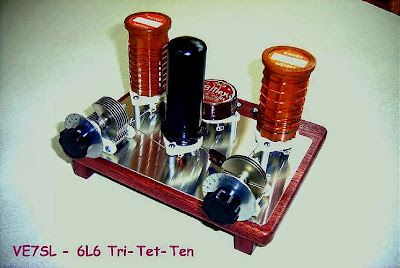Posts Tagged ‘cycle 24’
 New Life For The Tri-Tet-Ten
New Life For The Tri-Tet-Ten
Sadly, I fear that my Tri-Tet-Ten has likely seen the last of its glory days of European 10m DX. It has been sitting, forlornly, on it's operating shelf beside my main station, for a few years now and has always been ready to spring into action whenever the winter F2 on 10m rolled-in. Although I anticipate more 10m F2 this coming fall, I don't think we'll get any barn-burner European openings as I have seen in the past. Conditions really need to be very good for the 6L6's 4 1/2 watts of 10m output to make it over the pole but over the past four winters, the one-lunger has worked over 100 Europeans on 10m F2.
Not being quite ready to throw in the towel on one of my favorite ever projects, over the past two nights I have sparked-up the tritet on 20m, which has been like the good old days in the evening ... strong signals over the pole peaking around 2130 local time.
As it did on 10m, the tritet did not disappoint! My first CQ (crystal controlled on 14031 kHz) was a pounced upon by two Europeans, eager to work a VE7. Over the two evenings, contacts were enjoyed with the following stations:
OE5FBL Haid, Austria
RV3LK Smolensk, Russia
UA2FT Polessk, Russia
RA2FAC Kaliningrad, Russia
RA1OD Kotlas, Russia
R3RR Tambov, Russia
DL1SXB Schwerin, Germany
UR5LCZ Pivdenne, Ukraine
MD0CCE Ramsey, Isle of Man
OK1KTI Huntirov, Czech Republic
IK1XPP Crescentino, Italy
All of the stations were worked on my crystal frequency (a very old 40m xtal doubling to 20m) of 14031 kHz and answered my CQ. At just under 10 watts output, the average signal report received was 579.
Interestingly, two stations gave me 'T' reports of less than 9 to (incorrectly) describe the slight chirp on the oscillator. In the RST system, anything less than a 'T9' should actually describe the degree of undesired modulation (usually A.C. ripple) and not chirp. The proper way of indicating chirp is to append the report with a 'C'. Since chirp is rarely heard on the airwaves anymore, it's understandable that some might not properly understand the 'T' part of 'RST'.
So it looks as though the Tri-Tet-Ten has earned the right to stay on the side operating shelf a bit longer ... but I'm not renaming it the 'Tri-Tet-Twenty' just yet!
 More Magic
More Magic
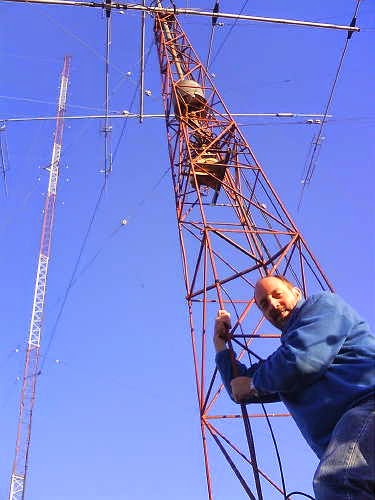 |
| LU6QI |
For the third day in a row, someone has sprinkled 6m magic-dust over the Pacific Northwest with more long-haul propagation into southern South America. The openings have been characterized by their very small footprints and today, unlike the previous two days, the footprint locked-in on my own QTH for over an hour.
For the most part, signals were in the 559 range but at times would build up to true 599 levels, reminiscent of the previous cycle's F2 north-south openings in the afternoon.
During the entire opening, strong sporadic -e signals from California, Arizona and Nevada were present so I suspect that the propagation mode was Es to TEP and from there to southern SA who knows! I doubt there was any F2 involved (unless it was ver SA) as the solar flux just doesn't seem to be high enough to support that mode. In all likelihood, the present coronal hole stream that is impacting the ionosphere has been the trigger for these unheralded openings.
 |
| courtesy: https://maps.google.ca/ |
During the opening, the following stations were worked, mostly on CW but some on SSB as their signals were very loud at times:
CX90IARU, LW6DG, LU6QI, CE2AWW, CX3AL, LU5FF, CX1DDO, LU4FPZ, CX6DRA and CE3SX.
As mentioned in my last blog ... who knows what this cycle will do next as the surprises just keep coming!
Is there enough dust left for a fourth day in a row?
 Persistent Cycle 24
Persistent Cycle 24
If you've wondered why the bands have been so volatile of late, it's because Cycle 24 just won't go away quietly. It seems that for the past several months, our planet has been besieged by one solar bombardment after another. Most of it seems to be coming via Coronal Hole Streams.
This UV image from NASA's Solar Dynamics Observatory satellite clearly shows the large coronal hole presently facing earth. The arrowed vectors represent material spewing from the hole, with much of it earth-bound. The material from this hole is expected to arrive between April 21-22, possibly causing more auroral activity.
Our Sun's latest rotation is showing several new large sunspot groupings, all very capable of unleashing a new round of solar flares and associated disruption ... if nothing else, Cycle 24 is persistent!
Peeks at the geomagnetic activity for April 16th illustrate just how active things have been of late ... making the high HF bands sound like the middle of the night as well as making LF and MW propagation depressing.
The software gurus at NOAA have been busy once again, this time revamping several of their visual models to an 'animated' mode. The Ovation Auroral map is particularly interesting when run in this mode as it shows the auroral field's activity visually over the past 24 hours. The display gives one a new appreciation for the dynamics of such large scale events:
An auroral event on Thursday evening gave 6m conditions a bit of a kick in the backside on Friday afternoon with signals from southern South America making it into various regions of the U.S. including the PNW, usually left out of such affairs. At one point, CE2AWW was hearing / working both the west coast (W7's) and the east coast (VO1's). Sporadic-e was definitely involved on the west coast end as the band was open to California / Nevada for most of the day.
No one can be certain of what lies ahead for Cycle 24 but it's certainly not going away with a whimper!
 |
| courtesy: http://sdo.gsfc.nasa.gov/ |
Our Sun's latest rotation is showing several new large sunspot groupings, all very capable of unleashing a new round of solar flares and associated disruption ... if nothing else, Cycle 24 is persistent!
 |
| courtesy: http://sdo.gsfc.nasa.gov/data/ |
 |
| courtesy: http://www.swpc.noaa.gov/ |
The software gurus at NOAA have been busy once again, this time revamping several of their visual models to an 'animated' mode. The Ovation Auroral map is particularly interesting when run in this mode as it shows the auroral field's activity visually over the past 24 hours. The display gives one a new appreciation for the dynamics of such large scale events:
 |
| courtesy: http://www.swpc.noaa.gov/communities/radio-communications |
 |
| courtesy: http://www.dxmaps.com/ |
 Follow The Sun!
Follow The Sun!
 |
| Courtesy: http://www.swpc.noaa.gov/ |
Where do you get your propagation information?
If you're anything like the rest of us, you probably have two or three favorite sites that you visit to collect the latest data. The news of NOAA's new solar page has been making the e-mail rounds of late and just in case you've missed it....the "Space Weather Enthusiasts Dashboard" (and what ham isn't a 'space weather enthusiast'?) can be found here.
The new site provides an all-in-one viewing experience, with up-to-the-minute reports on such things as the 'K' index, dynamic solar images from various satellites and at various wavelengths, auroral conditions, CME impact predictions (dynamic), a TEC (Total Electron Count) map, sunspot and Solar Cycle activity graphs and more. I didn't see anything showing the daily solar flux numbers (SFI) but it may be there. There is now a growing belief that the SFI value is not that great an indicator of what will or won't be happening, radio-wise, especially when it comes to 50MHz.
Another feature that would be nice, is a display of the latest DST index. This number, based upon equatorial ring currents, is a valuable indicator for the trend in LF propagation. I use the Kyoto site, which provides a real time look at the numbers. Anything positive, or a positive-going trend, is always a good thing to see.
 |
| Courtesy: http://wdc.kugi.kyoto-u.ac.jp/ |
If you haven't checked these three sites out, have a look...they're well worth a bookmark and a daily visit ... and, you won't have to go to Hawaii to follow the sun.
 The Magic Lives
The Magic Lives
 With the Bz component of the Interplanetary Magnetic Field turning southwards yesterday, an unexpected incoming stream from the sun was able to interact more intensely with the earth's magentic field , producing some fairly active auroral conditions overnight. The 'K' index numbers rose as high as '7'...a rare event, indicating a major disturbance. By dawn, much of the activity was winding down and the ensuing F2 MUF spike was not far behind.
With the Bz component of the Interplanetary Magnetic Field turning southwards yesterday, an unexpected incoming stream from the sun was able to interact more intensely with the earth's magentic field , producing some fairly active auroral conditions overnight. The 'K' index numbers rose as high as '7'...a rare event, indicating a major disturbance. By dawn, much of the activity was winding down and the ensuing F2 MUF spike was not far behind.I hope that you were one of the alert 6m operators (not me sadly) able to take advantage of the quick F2 lift. Several stations on the east coast were worked or heard in Europe (EA8, EA7, EA3, IK5, CT1, G3, EI4) while in the afternoon, lucky band-watchers found several loud KH6's to work.
 |
| Courtesy: http://www.on4kst.com/index.php |
The 6m prop map reveals the unexpected level of mid-winter activity....as of Wednesday evening, the Bz is still pointing south and the K has risen to level 4.
What might Thursday bring?
 New Year’s Eve Magic
New Year’s Eve Magic
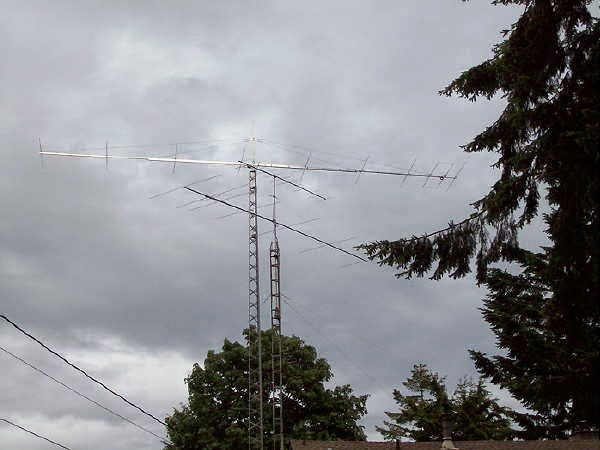 |
| 9el LFA at VE7DAY |
During the last solar rotation, flux values rose to near-Cycle highs and quickly plummeted, along with any hope of finding that six-meter Holy Grail...long-haul F2 propagation. Many six meter ops quickly found other things to do.
One person that didn't stop watching, and never does, was John - VE7DAY, in Campbell River, B.C., on Vancouver Island. John is VE7's iron man of 6m and spends almost 100% of his radio time seeking the magic.
For the past few winters, John has pointed his beam towards the south Pacific at around sunset, and called CQ from the VE7 black hole....on Tuesday evening he was justly rewarded.
At 00:50 UTC on the 31st, John's CQ was answered by Roger, ZL3RC in Christchurch, on New Zealand's South Island...12,021km from Campbell River.
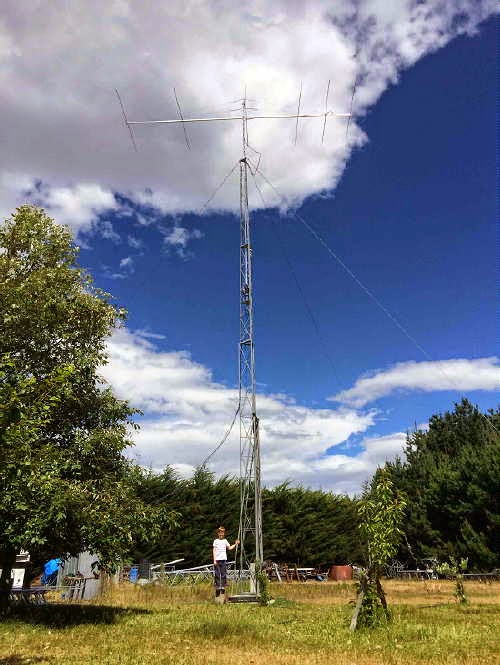 |
| 6el Yagi at ZL3RC |
One minute later, John worked Chris, ZL2DX, in Martinborough, on the North Island.
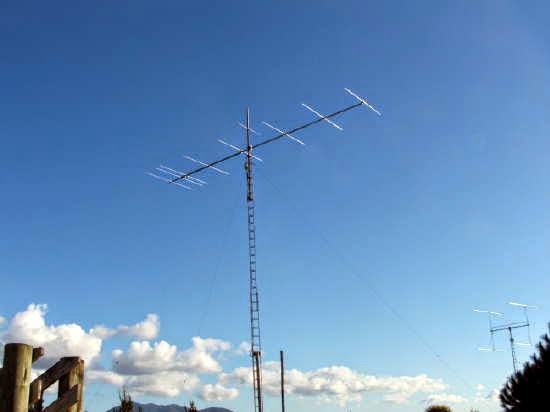 |
| 8el Yagi at ZL2DX |
At 0111 UTC, John completed the hat-trick by working Paul, ZL4PW, in Oamaru, back on the South Island.
 |
| Paul, ZL4PW / 7el at 7m |
"Decades ago, many DXers believed that Argentina was the world DX hot spot. DXers and contesters seemed to do the best down there. When I was in Brazil, one of the places I lived in was the state of Mato Grosso do Sul, PT9-land. It was only about an hour-and-a-half's drive to the Paraguay border, so conditions there were pretty near like those in Argentina, which was also nearby. I ran 100 watts to a vertical wire taped to a bamboo rod... and thought my QTH must have been included in the hot spot area.
I think now we are becoming aware of another hot spot, this one being in North America on Vancouver Island. I'm speaking, of course, of the your QTH, John! You seem to be doing quite well from that location. Keep it up!!
I see you worked clear down to ZL4. I'm envious. I've been looking for a ZL4 contact for a long time. Today when the band was open to ZL, I was on the road returning from Tacoma. Well, I'm glad you were able to work that great DX.
I will change the Distance Scoreboard to indicate the new records you established today. Congrats!
73, Paul K7CW"
With the present dismal solar flux and low solar activity, it is not likely that these contacts were via the F2 mode, but you wouldn't know it from the size of John's signal, recorded by ZL3RC. Being in the middle of our secondary sporadic-E season, north of the equator and at the peak of the major Es season down-under, I think a better candidate is an Es-link from both sides into the Trans Equatorial afternoon 'bubble'....certainly Es from both ends into whatever is happening in the ionospheric cauldron at the equator!
All four stations were running high power and big antennas, and with a little help from the seasonal E, it all seems to have come together nicely.

Congrats to all involved, and especially John, as all of the other 6m ops in this part of the country, including myself, were asleep at the switch it seems!
 Waiting For The Magic
Waiting For The Magic
 |
| Courtesy: http://www.noaa.gov/ |
The last time the sun did this, at the end of November, I was able to work two stations in Florida on F2 during a short surge in the MUF that had been hovering in the 46-47MHz range. Maybe we'll all get lucky again soon if solar activity continues to climb.
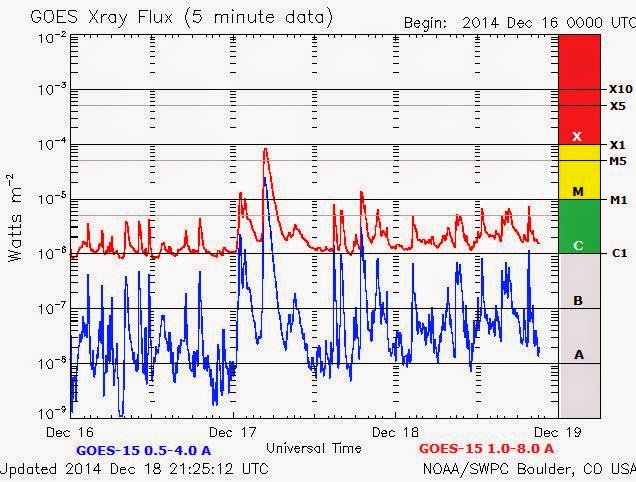 |
| Courtesy: http://www.noaa.gov/ |
Today's rise in the MUF was a disappointment as the highest I saw was about 43MHz, for a brief few moments. The MUF then dropped back below 37MHz but continued to surge into the high 39's.
This short video, made today at around noon, shows the MUF surging....the band full of signals one moment and then empty the next. The region between 10m and 6m is chalk-full of commercial FM activity (police, fire, utility, etc) and makes and excellent way of monitoring the trend in MUF growth...at times it seems that the F layer is alive and breathing as it trys, usually without success, to climb higher and higher. One of stations in the video appears to be from Maryland, on the typical E-W propagation path seen at this time of the year. My receiving antenna is my normal 4-el 6m Yagi, which must be horribly inefficient at this frequency yet...notice how strong signals can be when they are propagating right at the edge of the MUF:
